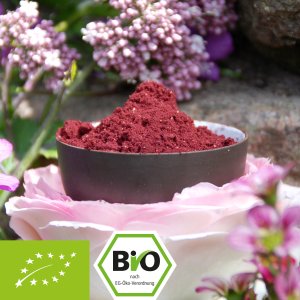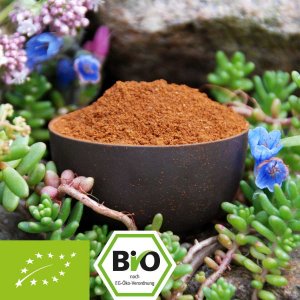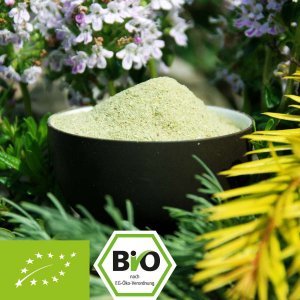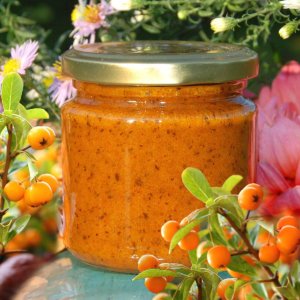Superfood from the Baltic States - blueberry, chaga, sea buckthorn and more
Estonia is a small Baltic country north of Latvia with just over 1.3 million inhabitants. It is especially known for its mix of untouched nature and high-tech IT.
The term Baltic comes from the Latin "mare balticum", which in turn refers to the Baltic Sea in German. In English the term "baltic sea" has been retained.

Baltic Sea coastal strip in the Baltic States
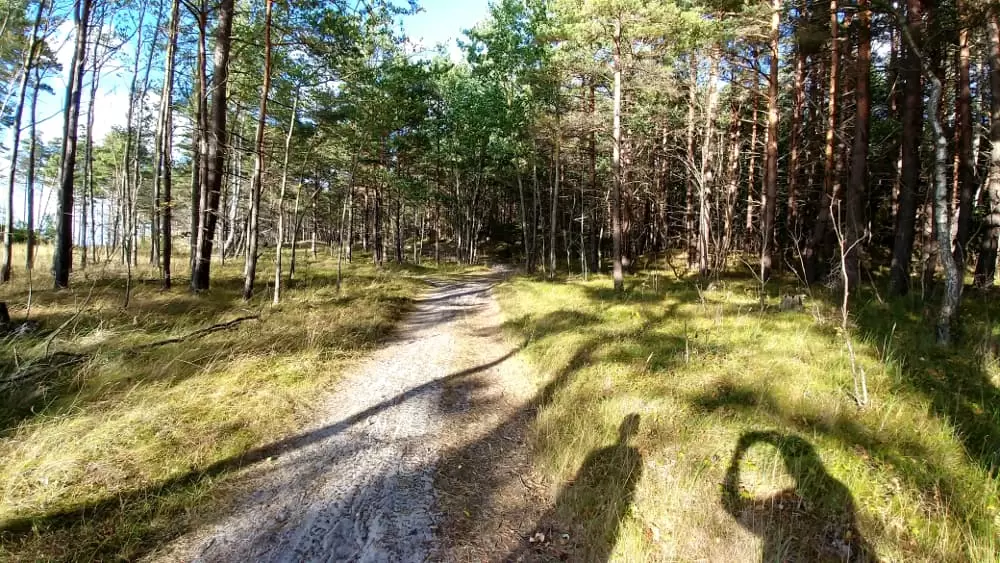
Forest directly on the Baltic Sea coast in the Baltic States
In recent years, Estonia has been striving to become one of the most sustainable countries in the world and is currently well on the way to becoming so. 40% of the forest areas are already organically managed and work is continuing to ensure that more privately owned forests can be certified without much bureaucracy. More than half of the country's land area is forest land, 60% of which is privately owned. In fact, in contrast to many other countries, the forest area in Estonia has actually increased over the last few years and it is the Estonians' aim to maintain this trend. In the beginning, about 80% of Estonia was covered with forests, but this area decreased by 34% due to the increase in agriculture. It was only during the Soviet occupation that the proportion began to rise again, as many agricultural areas were no longer used. Through agricultural reforms in the 1990s, this trend could then be continued. This becomes obvious when you travel through Estonia by car or bus, because you pass almost exclusively forests. Especially if you come from a densely populated and agricultural region like North Rhine-Westphalia, this is unusual.
The journey from Riga in Latvia to Tallinn is particularly appealing here, as the first half of the journey is along a coastal road that reveals the incomparable beauty of the Baltic States, especially during sunset.
On the blue-black-white flag you can easily read what untouched nature means to the Estonians. The blue stands for the sky, the black for the dense forests and the white for the snow in the cold winter. The harsh Nordic climate allows only the most adaptable and strongest plants and animals to survive. The plants here have a significantly shortened vegetation period and have to resist the cold temperatures (from as low as -35 degrees Celsius and only 4-5 hours of sunshine in winter). One of these plants is the spruce, which is particularly resistant to winter and whose edible shoots contain a lot of vitamin C. Enjoyed fresh, the tender young shoots still taste relatively mild, but are still somewhat astringent.
Dried and powdered, Fichtensprossen can also be enjoyed as tea or in smoothies.
In his book "Gemälde von Nord-Amerika in Allen Beziehungen von der Entdeckung an bis bis die Neueste Zeit" (Paintings of North America in All Relationships from the Discovery to the Recent Era), the travel writer Traugott Bromme describes in the 19th century how the Native Americans of North America made a healing drink, the so-called Sprout Beer, from the young shoots of the black spruce (Pinus nigra L.). This drink served as a source of vitamin C during the winter months and the tradition of "brewing" was also passed on to the European immigrants.
But not only the Fichtensprossen but also the dried resin, which can be easily collected from tree wounds, can be used. Especially in the Christmas season it is a wonderful aromatic incense due to its essential oils.

Young pine cone
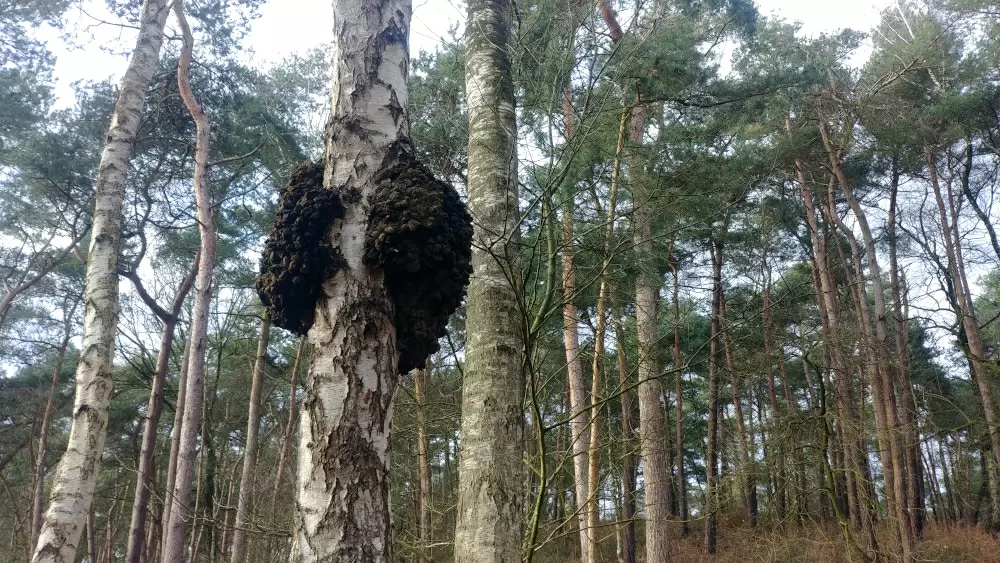
Chaga mushroom on birch trunk
But there are many other valuable plants in the forests of Estonia.
Besides spruce, pine and birch are the most common.
Birches are used in the Baltic States in many different ways. In spring, when the trees are in full sap, young and strong birches are used to extract the so-called birch water. For this purpose, a small hole is drilled into the trunk, into which a tube is inserted, through which the birch sap then begins to flow. This sap is pleasantly mild and refreshing in taste. Of course the young birch leaves also serve as tea. They have a diuretic effect and are therefore often used as a support for urinary tract infections.
On old, often already dead birch trunks you can often find Chaga-Pilze, also called slate schillerporling. They are said to strengthen the immune system, and so they have been used as traditional medicine in ancient times, in the Nordic countries, Finland, Estonia, Russia, etc.
As the Chaga Pilz grows very slowly, large and distinctive specimens are rarely found in the forests.
At the feet of the birch trees one often finds distinctive carpets of cranberry and blueberry bushes.
Both berries are ripe for harvest and consumption in late summer.
You can of course harvest the Heidelbeeren by hand, but this is a very time-consuming and laborious job, as the bushes do not usually grow very tall.
Therefore the so-called blue bear combs are often used. When picking berries, the Baubär comb leaves the branches and leaves intact and therefore does not damage the blueberry bushes. Machine harvesting is of course out of the question here. On the one hand this is of course due to the landscape conditions and on the other hand it would not make sense ecologically.
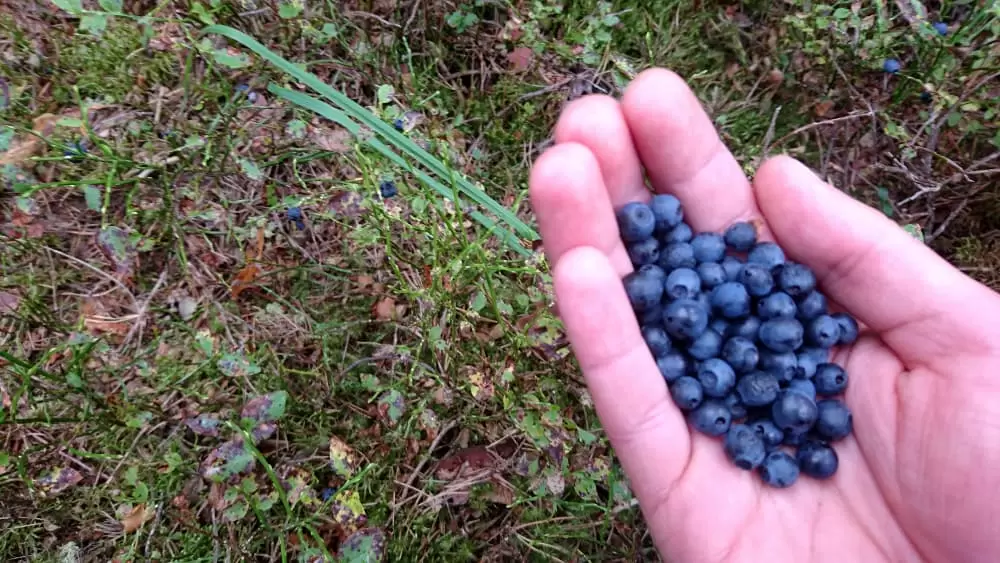
Blueberries
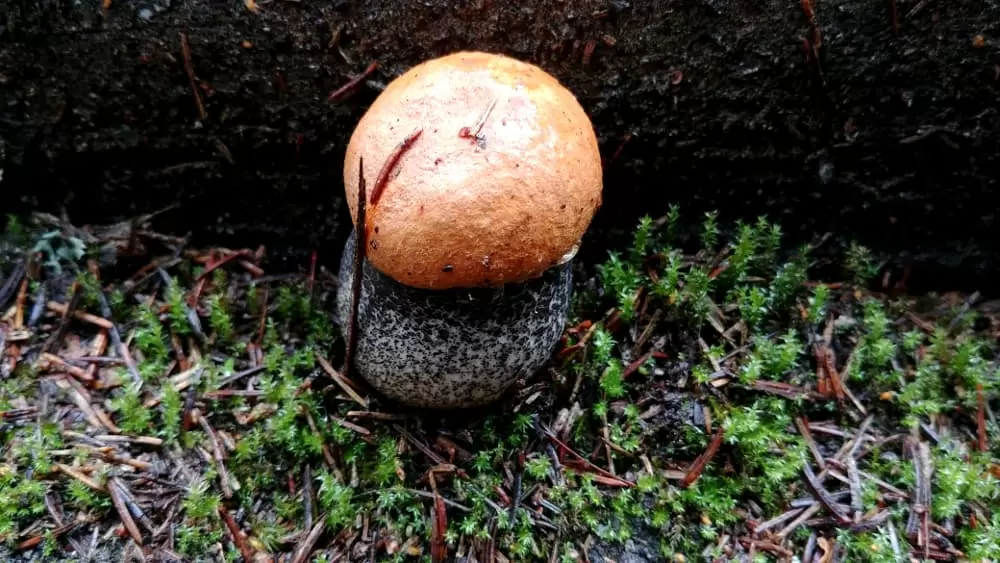
The birch red cap is edible
In addition to its traditional forests, Estonia is also known for its moor forests. After the last ice age, these moors came to an end. The melted ice that accumulated was very low in oxygen. The plants and trees that grew and died in it did not weather completely. As a result, over time the water became the bogland we see today in Estonia. More than 6 percent of Estonia is covered with moorland, which can be visited via footbridges in some places.
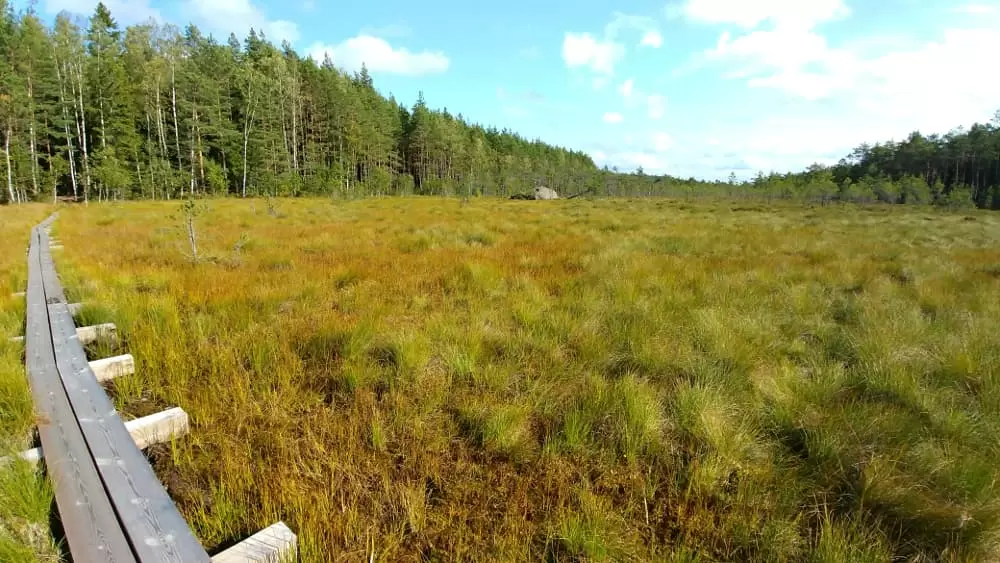
Footbridge through the moor
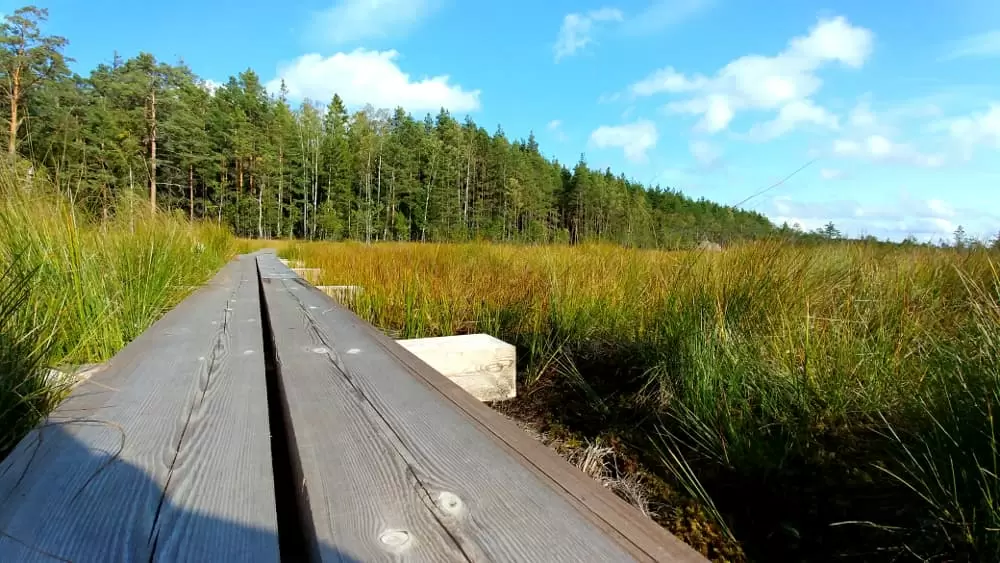
Same bridge :)
In the forests you can also find countless erratic blocks, some of them huge, which were transported by the glaciers from Scandinavia to Europe. These are sometimes climbable with ladders.
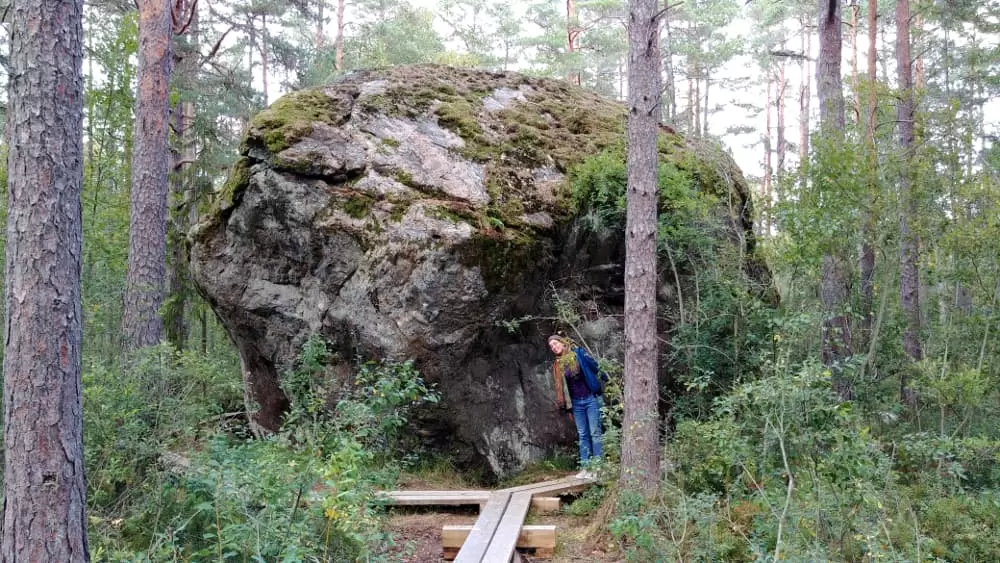
Giant boulder in the forest
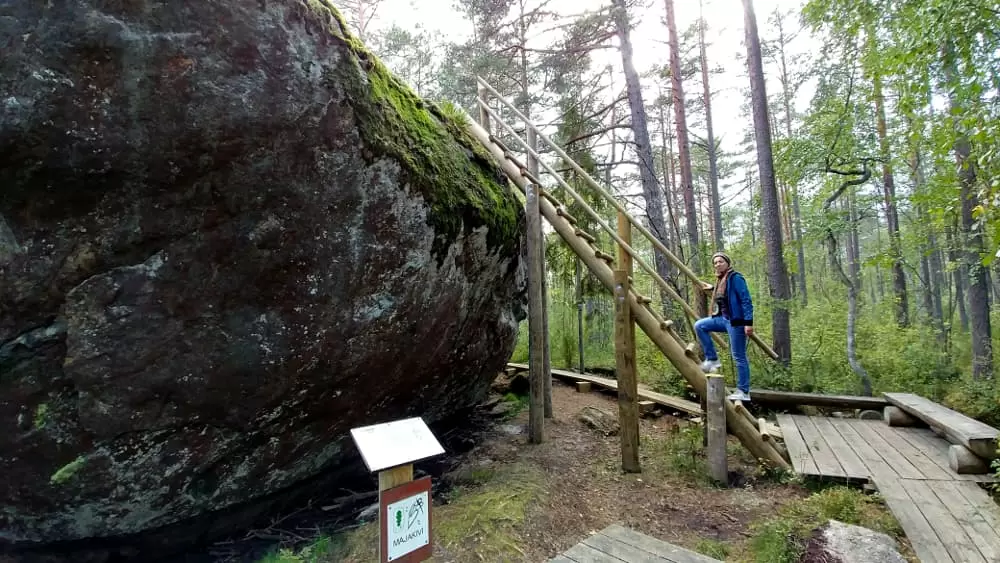
Giant foundling with ladder
Forests are very important to Estonians. During my visit an elderly Estonian lady told me that she always prefers to live close to nature in the summer. Although she has a much less comfortable life there without heating or a normal stove than in the city with her family, she is always drawn back there in summer.
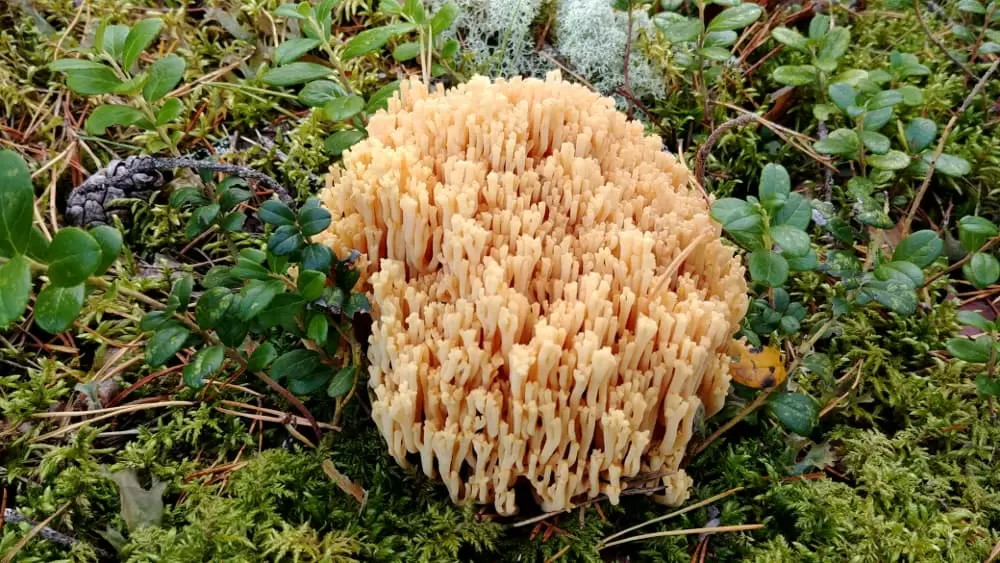
Even the cockscomb coral is edible

The toadstool is beautiful, but unfortunately not edible.
Thus, especially in late summer and autumn, you can always see people with a blue bear's comb and mushroom basket roaming through the forests, who appreciate the diversity, richness and beauty of the Estonian forests.
So it is definitely worth a visit.
